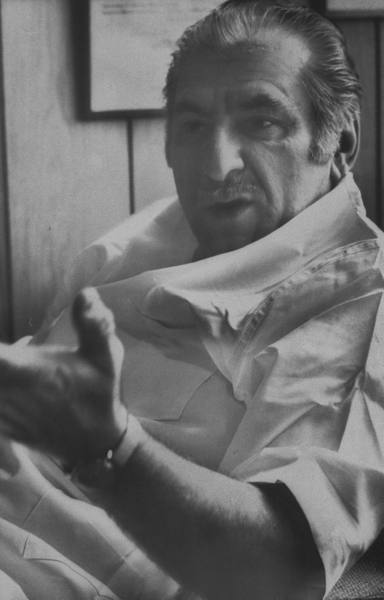I'll give you hints. The top graph is for Chile. At some point abortion was banned. The bottom graph is for the United States. At some point abortion was legalized nationwide.
Does that help you to identify the points in time at which abortion laws changed?
Are you ready for the answers?
The two graphs show the same downward trend in abortion mortality over time. And each graph shows the impact of changes in abortion law on abortion mortality: exactly zip.
How can that be?
This happens because other factors, such as overall maternal health, medical care infrastructure and advancements, and family prosperity have a huge impact on mortality for everything from cancer to diarrhea, and that includes abortion.
Abortion laws do have some impact who practices abortions: with legalization, non-physicians lose customers and eventually fade almost entirely away. With criminalization, many physicians stop doing abortions and some non-physicians take their places. However, the bulk of abortions, legal or illegal, are performed by the same core group of doctors who ply their trade regardless of whether abortion is legal or illegal.
The legal status of abortion does not change whether or not these doctors perform abortions, but it does change how they go about it.
 When abortion is illegal, the consequences of injuring or killing a woman are usually dire. At the very least the doctor can expect an investigation and arrest. He will likely lose his license. If the patient dies, he might very well be prosecuted for murder and might even face the death penalty.
When abortion is illegal, the consequences of injuring or killing a woman are usually dire. At the very least the doctor can expect an investigation and arrest. He will likely lose his license. If the patient dies, he might very well be prosecuted for murder and might even face the death penalty. But when abortion is legal, on the other hand, the consequences of injuring or killing a woman are, frankly, usually quite trivial. If a patient sues, the doctor's insurance carrier will most likely settle out of court. If the malpractice is egregious, the woman or her family might refuse to settle and will go to court. Only the most appalling malpractice can result in arrest and prosecution. Laws against abortions give the abortion practitioner a strong motive to stay out of trouble, which means using every means possible to avoid injuring a patient. Legalization allows him to relax.
 I know of three erstwhile criminal abortionists -- Jesse Ketchum, Milan Vuitch (pictured, right) and Benjamin Munson -- who practiced carefully prior to legalization and managed to avoid killing any patients. Each got sloppy after legalization and went on to kill two patients.
I know of three erstwhile criminal abortionists -- Jesse Ketchum, Milan Vuitch (pictured, right) and Benjamin Munson -- who practiced carefully prior to legalization and managed to avoid killing any patients. Each got sloppy after legalization and went on to kill two patients.There is also another dynamic that we saw in the Kermit Gosnell debacle we saw in Pennsylvania. When abortion is legal, there is a presumption of safety that leads to complacency among those who place their faith in legalization as the key factor in patient safety. Officials become lax in regulatory enforcement and abortion-rights organizations become careless about where they are referring women for abortions. This allows somebody like Kermit Gosnell to thrive under legalization in a way that would be nearly impossible were abortion a criminal act and a patient death a case of murder.
But what of the balance between physician and non-physician abortion practitioners relative to abortion laws? Yes, it is true that there will be far fewer non-physicians doing abortions when they are legal, but the increasing laxness among the physicians and blithe oblivious of possible risks among officials and abortion-rights groups clearly offset the increased level of medical training in the pool of those performing abortions.
The statistics don't lie. People's behavior adjusts to the legal status of abortion. Areas where legalization improves safety and areas where legalization encourages risk-taking balance each other out, resulting in a net zero change in abortion deaths among women who choose abortion regardless of changes in whether abortion is legal or not.




No comments:
Post a Comment